Table of Contents
Preface
1 Getting Ready
Whence C?
Why C?
Design Features
Efficiency
Portability
Power and Flexibility
Programmer Oriented
Shortcomings
Whither C?
What Computers Do
High-level Computer Languages and Compilers
Language Standards
The First ANSI/ISO C Standard
The C99 Standard
The C11 Standard
Using C: Seven Steps
Step 1: Define the Program Objectives
Step 2: Design the Program
Step 3: Write the Code
Step 4: Compile
Step 5: Run the Program
Step 6: Test and Debug the Program
Step 7: Maintain and Modify the Program
Commentary
Programming Mechanics
Object Code Files, Executable Files, and Libraries
Unix System
The GNU Compiler Collection and the LLVM Project
Linux Systems
Command-Line Compilers for the PC
Integrated Development Environments (Windows)
The Windows/Linux Option
C on the Macintosh
How This Book Is Organized
Conventions Used in This Book
Typeface
Program Output
Special Elements
Summary
Review Questions
Programming Exercise
2 Introducing C
A Simple Example of C
The Example Explained
Pass 1: Quick Synopsis
Pass 2: Program Details
The Structure of a Simple Program
Tips on Making Your Programs Readable
Taking Another Step in Using C
Documentation
Multiple Declarations
Multiplication
Printing Multiple Values
While You’re at It—Multiple Functions
Introducing Debugging
Syntax Errors
Semantic Errors
Program State
Keywords and Reserved Identifiers
Key Concepts
Summary
Review Questions
Programming Exercises
3 Data and C
A Sample Program
What’s New in This Program?
Data Variables and Constants
Data: Data-Type Keywords
Integer Versus Floating-Point Types
The Integer
The Floating-Point Number
Basic C Data Types
The int Type
Other Integer Types
Using Characters: Type char
The _Bool Type
Portable Types: stdint.h and inttypes.h
Types float, double, and long double
Complex and Imaginary Types
Beyond the Basic Types
Type Sizes
Using Data Types
Arguments and Pitfalls
One More Example: Escape Sequences
What Happens When the Program Runs
Flushing the Output
Key Concepts
Summary
Review Questions
Programming Exercises
4 Character Strings and Formatted Input/Output
Introductory Program
Character Strings: An Introduction
Type char Arrays and the Null Character
Using Strings
The strlen() Function
Constants and the C Preprocessor
The const Modifier
Manifest Constants on the Job
Exploring and Exploiting printf() and scanf()
The printf() Function
Using printf()
Conversion Specification Modifiers for printf()
What Does a Conversion Specification Convert?
Using scanf()
The * Modifier with printf() and scanf()
Usage Tips for printf()
Key Concepts
Summary
Review Questions
Programming Exercises
5 Operators, Expressions, and Statements
Introducing Loops
Fundamental Operators
Assignment Operator: =
Addition Operator: +
Subtraction Operator: –
Sign Operators: – and +
Multiplication Operator: *
Division Operator: /
Operator Precedence
Precedence and the Order of Evaluation
Some Additional Operators
The sizeof Operator and the size_t Type
Modulus Operator: %
Increment and Decrement Operators: ++ and --
Decrementing: --
Precedence
Don’t Be Too Clever
Expressions and Statements
Expressions
Statements
Compound Statements (Blocks)
Type Conversions
The Cast Operator
Function with Arguments
A Sample Program
Key Concepts
Summary
Review Questions
Programming Exercises
6 C Control Statements: Looping
Revisiting the while Loop
Program Comments
C-Style Reading Loop
The while Statement
Terminating a while Loop
When a Loop Terminates
while: An Entry-Condition Loop
Syntax Points
Which Is Bigger: Using Relational Operators and Expressions
What Is Truth?
What Else Is True?
Troubles with Truth
The New _Bool Type
Precedence of Relational Operators
Indefinite Loops and Counting Loops
The for Loop
Using for for Flexibility
More Assignment Operators: +=, -=, *=, /=, %=
The Comma Operator
Zeno Meets the for Loop
An Exit-Condition Loop: do while
Which Loop?
Nested Loops
Program Discussion
A Nested Variation
Introducing Arrays
Using a for Loop with an Array
A Loop Example Using a Function Return Value
Program Discussion
Using Functions with Return Values
Key Concepts
Summary
Review Questions
Programming Exercises
7 C Control Statements: Branching and Jumps
The if Statement
Adding else to the if Statement
Another Example: Introducing getchar() and putchar()
The ctype.h Family of Character Functions
Multiple Choice else if
Pairing else with if
More Nested ifs
Let’s Get Logical
Alternate Spellings: The iso646.h Header File
Precedence
Order of Evaluation
Ranges
A Word-Count Program
The Conditional Operator: ?:
Loop Aids: continue and break
The continue Statement
The break Statement
Multiple Choice: switch and break
Using the switch Statement
Reading Only the First Character of a Line
Multiple Labels
switch and if else
The goto Statement
Avoiding goto
Key Concepts
Summary
Review Questions
Programming Exercises
8 Character Input/Output and Input Validation
Single-Character I/O: getchar() and putchar()
Buffers
Terminating Keyboard Input
Files, Streams, and Keyboard Input
The End of File
Redirection and Files
Unix, Linux, and Windows Command Prompt Redirection
Creating a Friendlier User Interface
Working with Buffered Input
Mixing Numeric and Character Input
Input Validation
Analyzing the Program
The Input Stream and Numbers
Menu Browsing
Tasks
Toward a Smoother Execution
Mixing Character and Numeric Input
Key Concepts
Summary
Review Questions
Programming Exercises
9 Functions
Reviewing Functions
Creating and Using a Simple Function
Analyzing the Program
Function Arguments
Defining a Function with an Argument: Formal Parameters
Prototyping a Function with Arguments
Calling a Function with an Argument: Actual Arguments
The Black-Box Viewpoint
Returning a Value from a Function with return
Function Types
ANSI C Function Prototyping
The Problem
The ANSI C Solution
No Arguments and Unspecified Arguments
Hooray for Prototypes
Recursion
Recursion Revealed
Recursion Fundamentals
Tail Recursion
Recursion and Reversal
Recursion Pros and Cons
Compiling Programs with Two or More Source Code Files
Unix
Linux
DOS Command-Line Compilers
Windows and Apple IDE Compilers
Using Header Files
Finding Addresses: The & Operator
Altering Variables in the Calling Function
Pointers: A First Look
The Indirection Operator: *
Declaring Pointers
Using Pointers to Communicate Between Functions
Key Concepts
Summary
Review Questions
Programming Exercises
10 Arrays and Pointers
Arrays
Initialization
Designated Initializers (C99)
Assigning Array Values
Array Bounds
Specifying an Array Size
Multidimensional Arrays
Initializing a Two-Dimensional Array
More Dimensions
Pointers and Arrays
Functions, Arrays, and Pointers
Using Pointer Parameters
Comment: Pointers and Arrays
Pointer Operations
Protecting Array Contents
Using const with Formal Parameters
More About const
Pointers and Multidimensional Arrays
Pointers to Multidimensional Arrays
Pointer Compatibility
Functions and Multidimensional Arrays
Variable-Length Arrays (VLAs)
Compound Literals
Key Concepts
Summary
Review Questions
Programming Exercises
11 Character Strings and String Functions
Representing Strings and String I/O
Defining Strings Within a Program
Pointers and Strings
String Input
Creating Space
The Unfortunate gets() Function
The Alternatives to gets()
The scanf() Function
String Output
The puts() Function
The fputs() Function
The printf() Function
The Do-It-Yourself Option
String Functions
The strlen() Function
The strcat() Function
The strncat() Function
The strcmp() Function
The strcpy() and strncpy() Functions
The sprintf() Function
Other String Functions
A String Example: Sorting Strings
Sorting Pointers Instead of Strings
The Selection Sort Algorithm
The ctype.h Character Functions and Strings
Command-Line Arguments
Command-Line Arguments in Integrated Environments
Command-Line Arguments with the Macintosh
String-to-Number Conversions
Key Concepts
Summary
Review Questions
Programming Exercises
12 Storage Classes, Linkage, and Memory Management
Storage Classes
Scope
Linkage
Storage Duration
Automatic Variables
Register Variables
Static Variables with Block Scope
Static Variables with External Linkage
Static Variables with Internal Linkage
Multiple Files
Storage-Class Specifier Roundup
Storage Classes and Functions
Which Storage Class?
A Random-Number Function and a Static Variable
Roll ’Em
Allocated Memory: malloc() and free()
The Importance of free()
The calloc() Function
Dynamic Memory Allocation and Variable-Length Arrays
Storage Classes and Dynamic Memory Allocation
ANSI C Type Qualifiers
The const Type Qualifier
The volatile Type Qualifier
The restrict Type Qualifier
The _Atomic Type Qualifier (C11)
New Places for Old Keywords
Key Concepts
Summary
Review Questions
Programming Exercises
13 File Input/Output
Communicating with Files
What Is a File?
The Text Mode and the Binary Mode
Levels of I/O
Standard Files
Standard I/O
Checking for Command-Line Arguments
The fopen() Function
The getc() and putc() Functions
End-of-File
The fclose() Function
Pointers to the Standard Files
A Simple-Minded File-Condensing Program
File I/O: fprintf(), fscanf(), fgets(), and fputs()
The fprintf() and fscanf() Functions
The fgets() and fputs() Functions
Adventures in Random Access: fseek() and ftell()
How fseek() and ftell() Work
Binary Versus Text Mode
Portability
The fgetpos() and fsetpos() Functions
Behind the Scenes with Standard I/O
Other Standard I/O Functions
The int ungetc(int c, FILE *fp) Function
The int fflush() Function
The int setvbuf() Function
Binary I/O: fread() and fwrite()
The size_t fwrite() Function
The size_t fread() Function
The int feof(FILE *fp) and int ferror(FILE *fp) Functions
An fread() and fwrite() Example
Random Access with Binary I/O
Key Concepts
Summary
Review Questions
Programming Exercises
14 Structures and Other Data Forms
Sample Problem: Creating an Inventory of Books
Setting Up the Structure Declaration
Defining a Structure Variable
Initializing a Structure
Gaining Access to Structure Members
Initializers for Structures
Arrays of Structures
Declaring an Array of Structures
Identifying Members of an Array of Structures
Program Discussion
Nested Structures
Pointers to Structures
Declaring and Initializing a Structure Pointer
Member Access by Pointer
Telling Functions About Structures
Passing Structure Members
Using the Structure Address
Passing a Structure as an Argument
More on Structure Features
Structures or Pointer to Structures?
Character Arrays or Character Pointers in a Structure
Structure, Pointers, and malloc()
Compound Literals and Structures (C99)
Flexible Array Members (C99)
Anonymous Structures (C11)
Functions Using an Array of Structures
Saving the Structure Contents in a File
A Structure-Saving Example
Program Points
Structures: What Next?
Unions: A Quick Look
Using Unions
Anonymous Unions (C11)
Enumerated Types
enum Constants
Default Values
Assigned Values
enum Usage
Shared Namespaces
typedef: A Quick Look
Fancy Declarations
Functions and Pointers
Key Concepts
Summary
Review Questions
Programming Exercises
15 Bit Fiddling
Binary Numbers, Bits, and Bytes
Binary Integers
Signed Integers
Binary Floating Point
Other Number Bases
Octal
Hexadecimal
C’s Bitwise Operators
Bitwise Logical Operators
Usage: Masks
Usage: Turning Bits On (Setting Bits)
Usage: Turning Bits Off (Clearing Bits)
Usage: Toggling Bits
Usage: Checking the Value of a Bit
Bitwise Shift Operators
Programming Example
Another Example
Bit Fields
Bit-Field Example
Bit Fields and Bitwise Operators
Alignment Features (C11)
Key Concepts
Summary
Review Questions
Programming Exercises
16 The C Preprocessor and the C Library
First Steps in Translating a Program
Manifest Constants: #define
Tokens
Redefining Constants
Using Arguments with #define
Creating Strings from Macro Arguments: The # Operator
Preprocessor Glue: The ## Operator
Variadic Macros: ... and __VA_ARGS__
Macro or Function?
File Inclusion: #include
Header Files: An Example
Uses for Header Files
Other Directives
The #undef Directive
Being Defined—The C Preprocessor Perspective
Conditional Compilation
Predefined Macros
#line and #error
#pragma
Generic Selection (C11)
Inline Functions (C99)
_Noreturn Functions (C11)
The C Library
Gaining Access to the C Library
Using the Library Descriptions
The Math Library
A Little Trigonometry
Type Variants
The tgmath.h Library (C99)
The General Utilities Library
The exit() and atexit() Functions
The qsort() Function
The Assert Library
Using assert
_Static_assert (C11)
memcpy() and memmove() from the string.h Library
Variable Arguments: stdarg.h
Key Concepts
Summary
Review Questions
Programming Exercises
17 Advanced Data Representation
Exploring Data Representation
Beyond the Array to the Linked List
Using a Linked List
Afterthoughts
Abstract Data Types (ADTs)
Getting Abstract
Building an Interface
Using the Interface
Implementing the Interface
Getting Queued with an ADT
Defining the Queue Abstract Data Type
Defining an Interface
Implementing the Interface Data Representation
Testing the Queue
Simulating with a Queue
The Linked List Versus the Array
Binary Search Trees
A Binary Tree ADT
The Binary Search Tree Interface
The Binary Tree Implementation
Trying the Tree
Tree Thoughts
Other Directions
Key Concepts
Summary
Review Questions
Programming Exercises
A: Answers to the Review Questions
Answers to Review Questions for Chapter 1
Answers to Review Questions for Chapter 2
Answers to Review Questions for Chapter 3
Answers to Review Questions for Chapter 4
Answers to Review Questions for Chapter 5
Answers to Review Questions for Chapter 6
Answers to Review Questions for Chapter 7
Answers to Review Questions for Chapter 8
Answers to Review Questions for Chapter 9
Answers to Review Questions for Chapter 10
Answers to Review Questions for Chapter 11
Answers to Review Questions for Chapter 12
Answers to Review Questions for Chapter 13
Answers to Review Questions for Chapter 14
Answers to Review Questions for Chapter 15
Answers to Review Questions for Chapter 16
Answers to Review Questions for Chapter 17
B: Reference Section
Section I: Additional Reading
Online Resources
C Language Books
Programming Books
Reference Books
C++ Books
Section II: C Operators
Arithmetic Operators
Relational Operators
Assignment Operators
Logical Operators
The Conditional Operator
Pointer-Related Operators
Sign Operators
Structure and Union Operators
Bitwise Operators
Miscellaneous Operators
Section III: Basic Types and Storage Classes
Summary: The Basic Data Types
Summary: How to Declare a Simple Variable
Summary: Qualifiers
Section IV: Expressions, Statements, and Program Flow
Summary: Expressions and Statements
Summary: The while Statement
Summary: The for Statement
Summary: The do while Statement
Summary: Using if Statements for Making Choices
Summary: Multiple Choice with switch
Summary: Program Jumps
Section V: The Standard ANSI C Library with C99 and C11 Additions
Diagnostics: assert.h
Complex Numbers: complex.h (C99)
Character Handling: ctype.h
Error Reporting: errno.h
Floating-Point Environment: fenv.h (C99)
Floating-point Characteristics: float.h
Format Conversion of Integer Types: inttypes.h (C99)
Alternative Spellings: iso646.h
Localization: locale.h
Math Library: math.h
Non-Local Jumps: setjmp.h
Signal Handling: signal.h
Alignment: stdalign.h (C11)
Variable Arguments: stdarg.h
Atomics Support: stdatomic.h (C11)
Boolean Support: stdbool.h (C99)
Common Definitions: stddef.h
Integer Types: stdint.h
Standard I/O Library: stdio.h
General Utilities: stdlib.h
_Noreturn: stdnoreturn.h
String Handling: string.h
Type-Generic Math: tgmath.h (C99)
Threads: threads.h (C11)
Date and Time: time.h
Unicode Utilities: uchar.h (C11)
Extended Multibyte and Wide-Character Utilities: wchar.h (C99)
Wide Character Classification and Mapping Utilities: wctype.h (C99)
Section VI: Extended Integer Types
Exact-Width Types
Minimum-Width Types
Fastest Minimum-Width Types
Maximum-Width Types
Integers That Can Hold Pointer Values
Extended Integer Constants
Section VII: Expanded Character Support
Trigraph Sequences
Digraphs
Alternative Spellings: iso646.h
Multibyte Characters
Universal Character Names (UCNs)
Wide Characters
Wide Characters and Multibyte Characters
Section VIII: C99/C11 Numeric Computational Enhancements
The IEC Floating-Point Standard
The fenv.h Header File
The STDC FP_CONTRACT Pragma
Additions to the math.h Library
Support for Complex Numbers
Section IX: Differences Between C and C++
Function Prototypes
char Constants
The const Modifier
Structures and Unions
Enumerations
Pointer-to-void
Boolean Types
Alternative Spellings
Wide-Character Support
Complex Types
Inline Functions
C99/11 Features Not Found in C++11
Index
A
B
C
D
E
F
G
H
I
J
K
L
M
N
O
P
Q
R
S
T
U
V
W
X-Y-Z
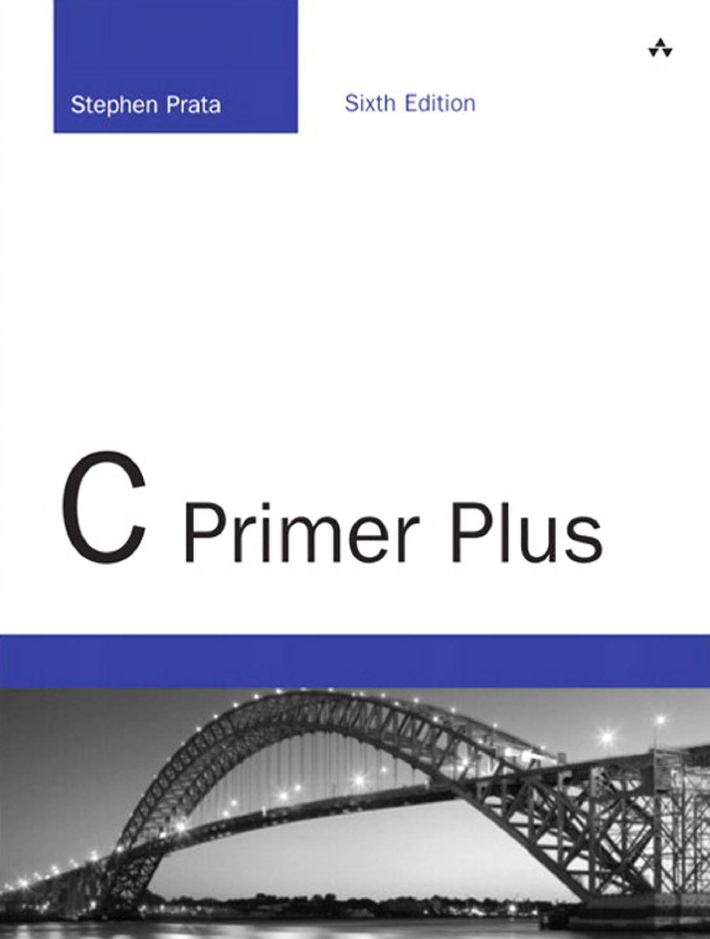

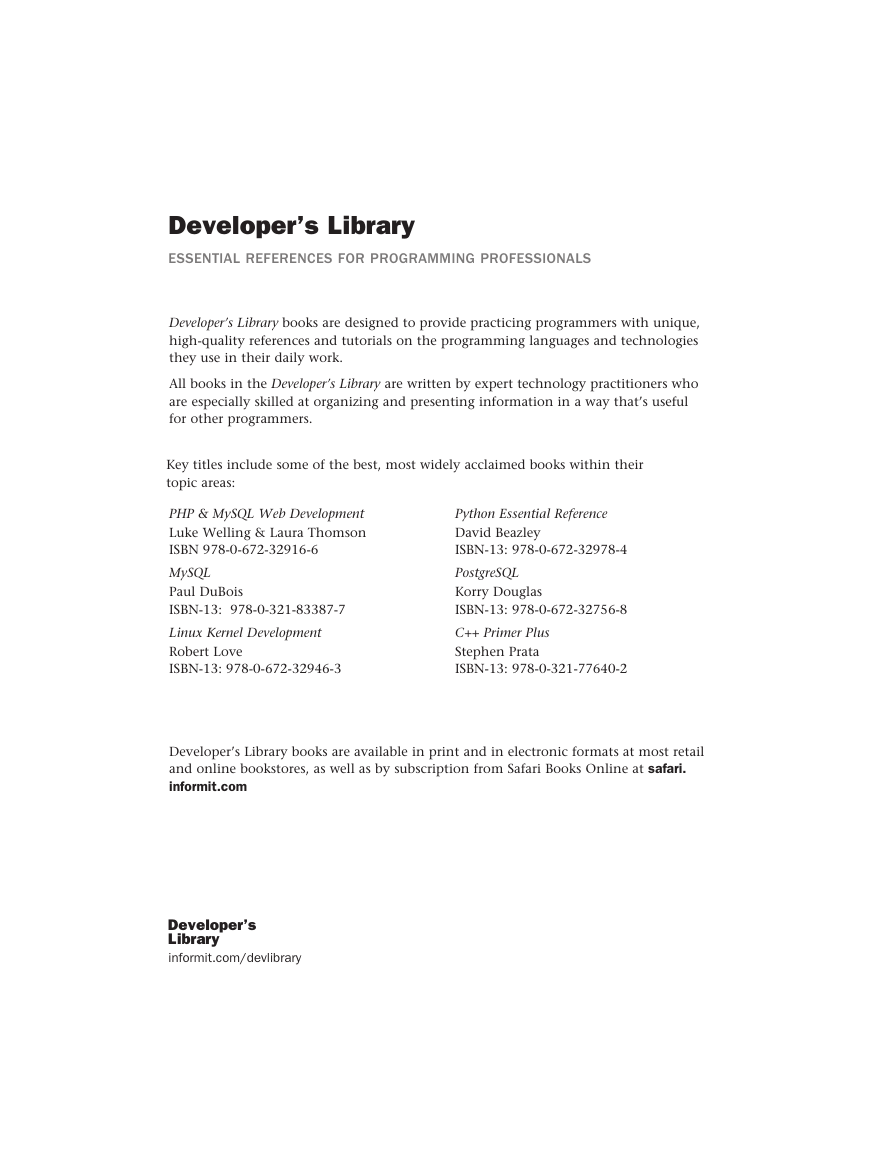
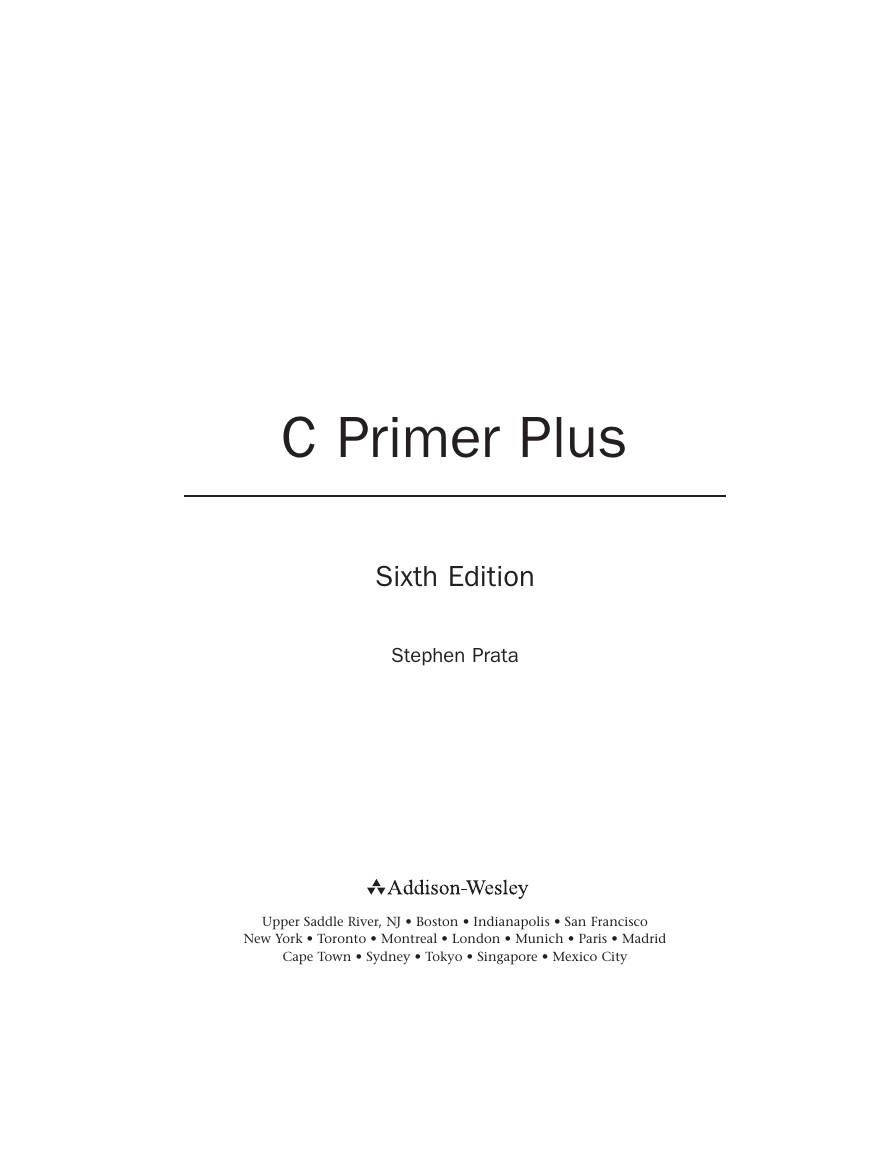
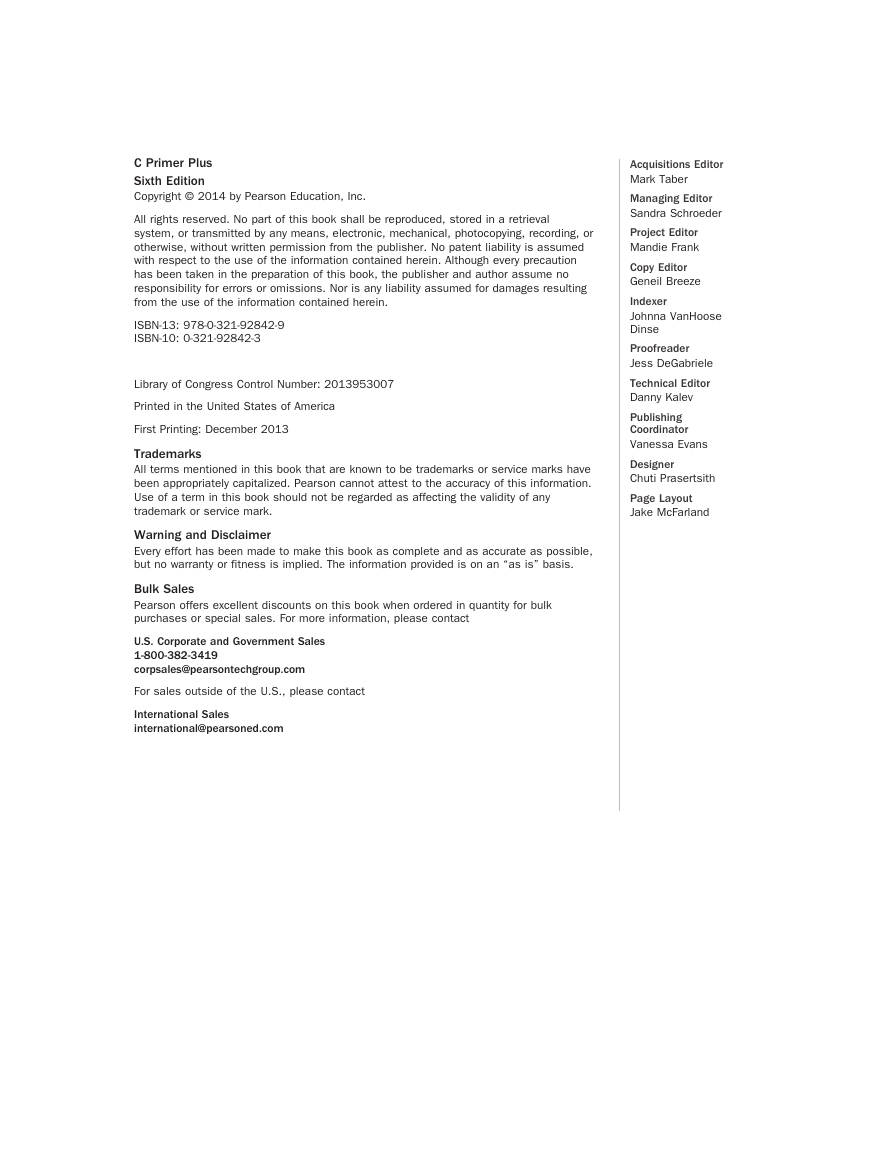
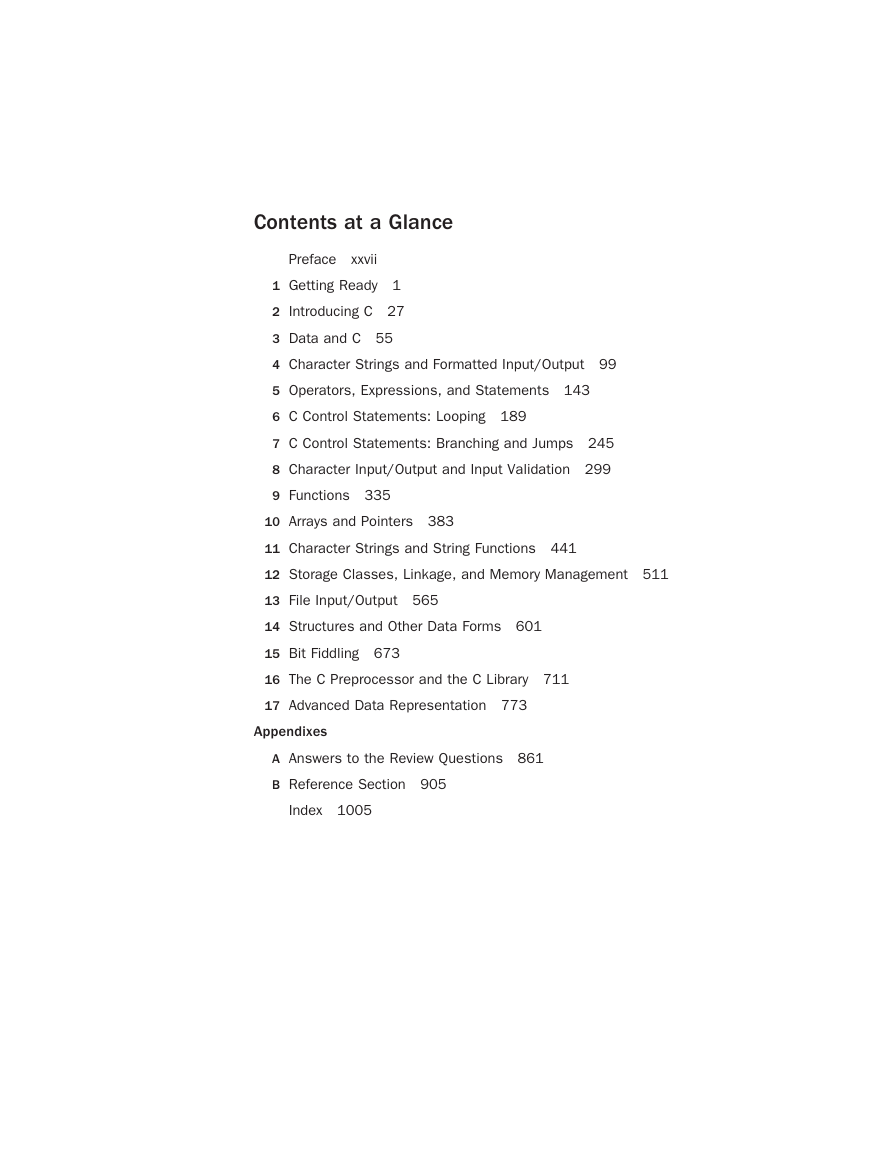
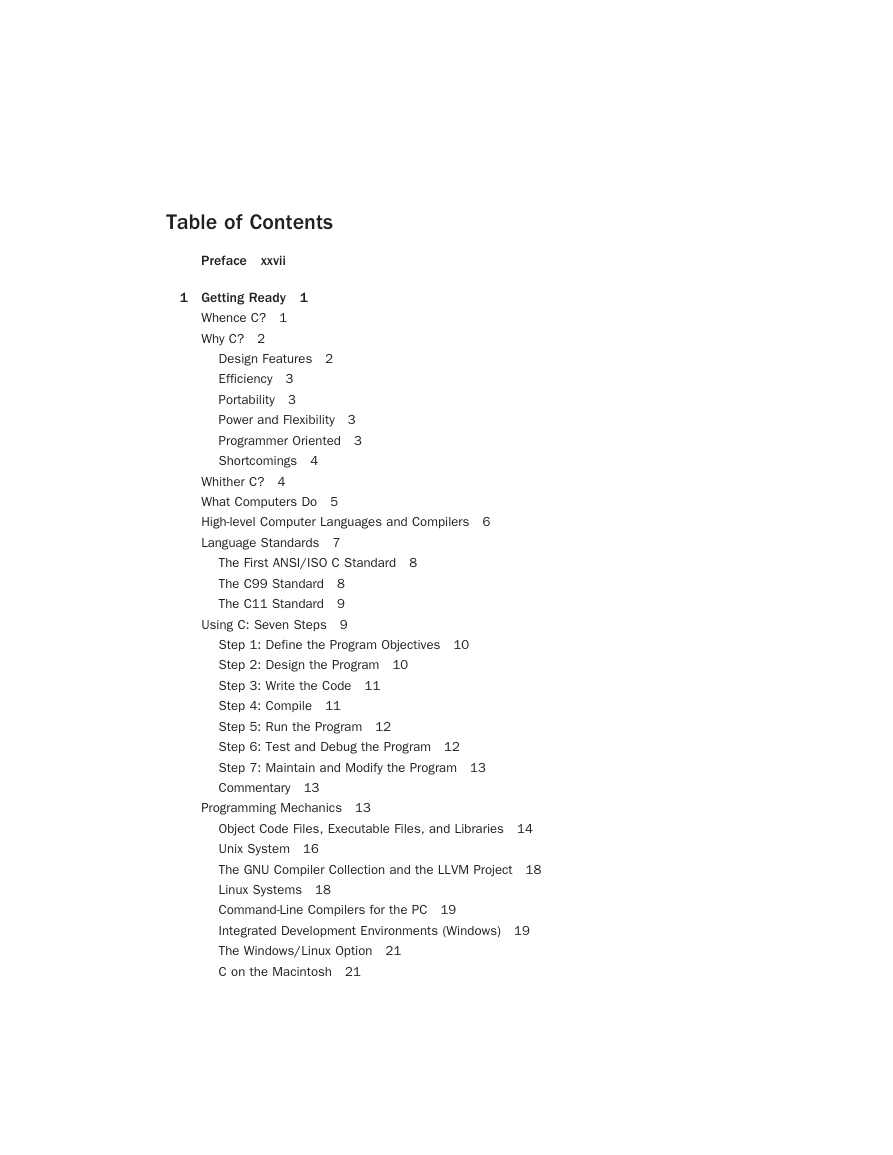
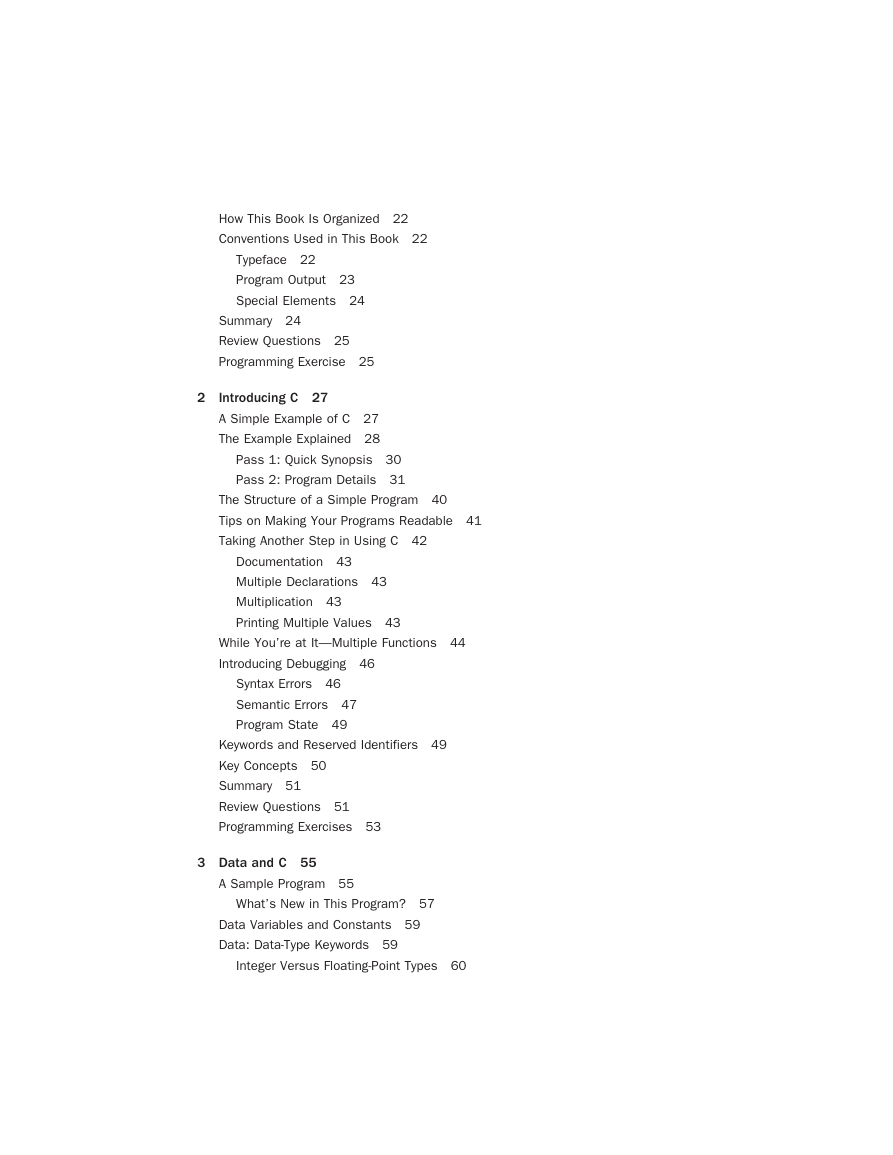








 2023年江西萍乡中考道德与法治真题及答案.doc
2023年江西萍乡中考道德与法治真题及答案.doc 2012年重庆南川中考生物真题及答案.doc
2012年重庆南川中考生物真题及答案.doc 2013年江西师范大学地理学综合及文艺理论基础考研真题.doc
2013年江西师范大学地理学综合及文艺理论基础考研真题.doc 2020年四川甘孜小升初语文真题及答案I卷.doc
2020年四川甘孜小升初语文真题及答案I卷.doc 2020年注册岩土工程师专业基础考试真题及答案.doc
2020年注册岩土工程师专业基础考试真题及答案.doc 2023-2024学年福建省厦门市九年级上学期数学月考试题及答案.doc
2023-2024学年福建省厦门市九年级上学期数学月考试题及答案.doc 2021-2022学年辽宁省沈阳市大东区九年级上学期语文期末试题及答案.doc
2021-2022学年辽宁省沈阳市大东区九年级上学期语文期末试题及答案.doc 2022-2023学年北京东城区初三第一学期物理期末试卷及答案.doc
2022-2023学年北京东城区初三第一学期物理期末试卷及答案.doc 2018上半年江西教师资格初中地理学科知识与教学能力真题及答案.doc
2018上半年江西教师资格初中地理学科知识与教学能力真题及答案.doc 2012年河北国家公务员申论考试真题及答案-省级.doc
2012年河北国家公务员申论考试真题及答案-省级.doc 2020-2021学年江苏省扬州市江都区邵樊片九年级上学期数学第一次质量检测试题及答案.doc
2020-2021学年江苏省扬州市江都区邵樊片九年级上学期数学第一次质量检测试题及答案.doc 2022下半年黑龙江教师资格证中学综合素质真题及答案.doc
2022下半年黑龙江教师资格证中学综合素质真题及答案.doc